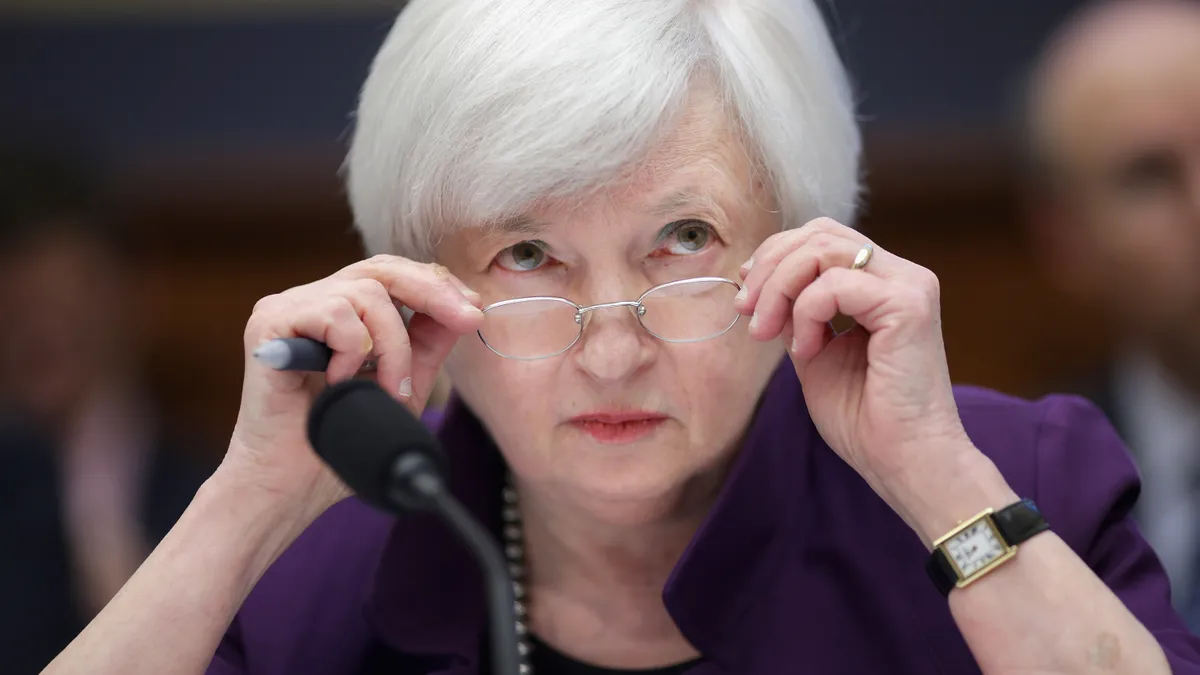Dive Brief:
- Top U.S. financial regulators called on companies to replace the London Interbank Offered Rate (LIBOR) with the Secured Overnight Financing Rate (SOFR) without delay, warning that other alternative reference rates are underpinned by low trading volumes and, if adopted, may pose a risk to financial stability.
-
“The decisions made now around the selection of alternative rates will determine whether some of LIBOR’s shortcomings may be replicated through the use of alternative rates that lack sufficient underlying transaction volumes,” Treasury Secretary Janet Yellen said, adding some alternative reference rates other than SOFR may, like LIBOR, become “vulnerable to manipulation and disruption.”
-
Speaking at the June 11 meeting of the Financial Stability Oversight Council, Federal Reserve Vice Chair Randal Quarles said that a panel made up of the New York Fed and financial institutions known as the Alternative Reference Rates Committee (ARRC) favors SOFR and “does not support more than minimal use of other rates in capital markets or for derivatives, and market participants should not expect such rates to be widely available.”
Dive Insight:
The Fed, Treasury and other regulators have for years called on financial institutions and other companies to shift to alternative reference rates from LIBOR, the benchmark for trillions of dollars in mortgages, derivatives, business loans and other financial contracts worldwide.
The central bank has said that after Dec. 31, financial institutions may not use LIBOR in new contracts. Quarles and other regulators affirmed the deadline and admonished companies that are slow to sunset LIBOR.
“Some market participants seem to believe that the remorseless evolution of the universe will somehow not involve them,” Quarles said while promoting SOFR in what he called a “eulogy to LIBOR.” “Others have adopted a posture of strategic procrastination, watching as others take the necessary steps to prepare for the imminent end of LIBOR.
“But deniers and laggards are engaging in magical thinking,” he said. “LIBOR is over.”
SOFR, while based on high transaction volumes, currently lacks some of LIBOR’s appealing traits. LIBOR is derived from London banks' estimates of what they would be charged when borrowing from other banks. The LIBOR rate can be forecast three, six and 12 months into the future.
SOFR is based on overnight repurchase agreements secured by Treasuries and, unlike LIBOR, does not reflect credit risk or expedite the creation of a term structure enabling corporate treasurers and financial institutions to make forward-looking rate calculations.
The ARRC will soon recommend term rates for SOFR based on an increase in trading of derivatives tied to the reference rate, Quarles said.
A Commodity Futures Trading Commission (CFTC) subcommittee on June 8 recommended as a “market best practice” that interdealer brokers switch trading of linear interest rate swaps from LIBOR to SOFR beginning July 26.
“When this change in quotation conventions takes effect next month, it should accelerate the transition and this will be the last key prerequisite for the SOFR term rate,” Quales said. “This is all good news.”
Securities and Exchange Commission Chair Gary Gensler, citing low transaction volumes, urged companies not to adopt the Bloomberg Short Term Bank Yield Index (BSBY) as an alternative to LIBOR.
“Markets underpinning BSBY not only are thin in good times, they virtually disappear in a crisis,” Gensler said during the meeting.
“BSBY might seem like an improvement on LIBOR or a more resilient benchmark, but I would suggest we not make that mistake,” he said. BSBY “represents a similar risk to financial stability.”












